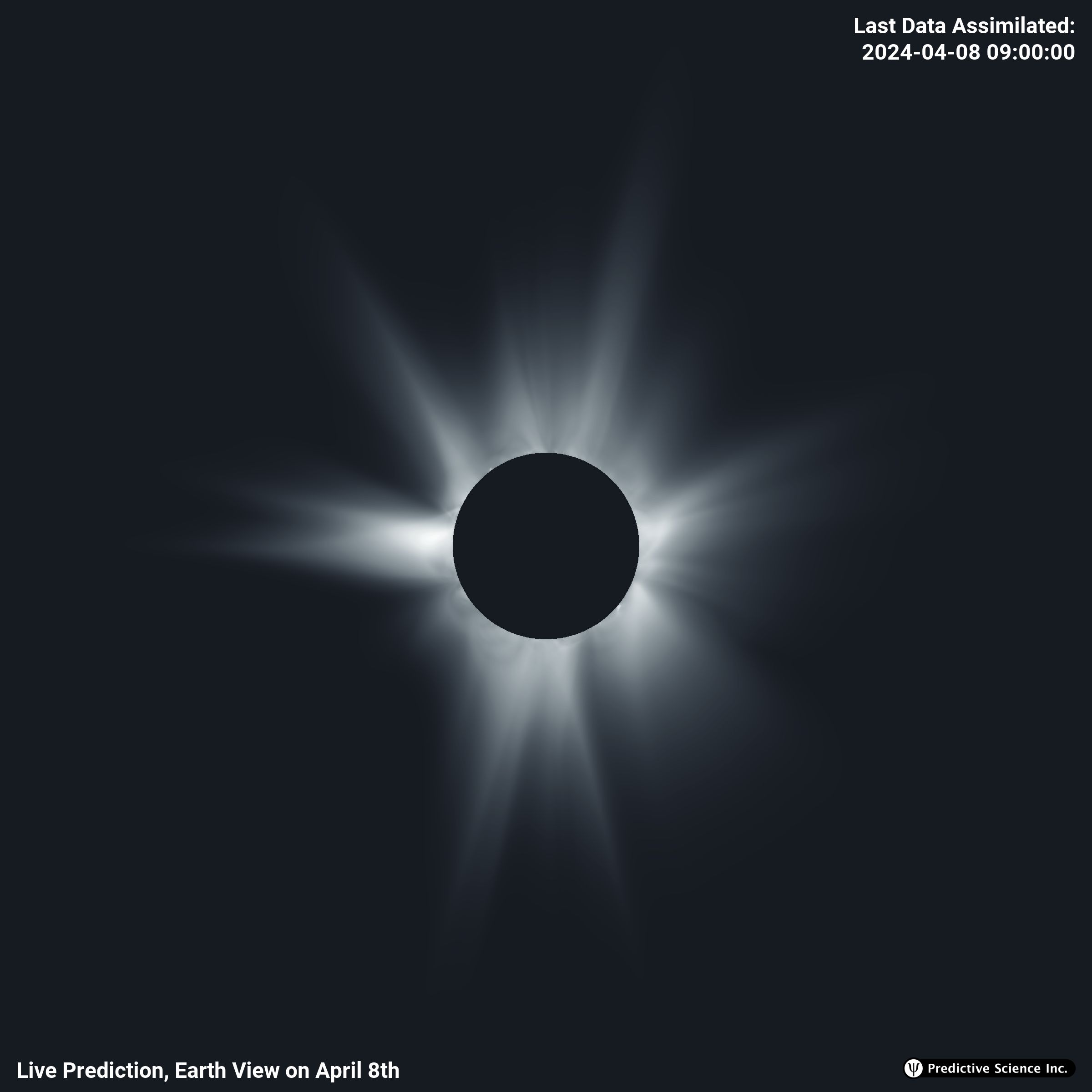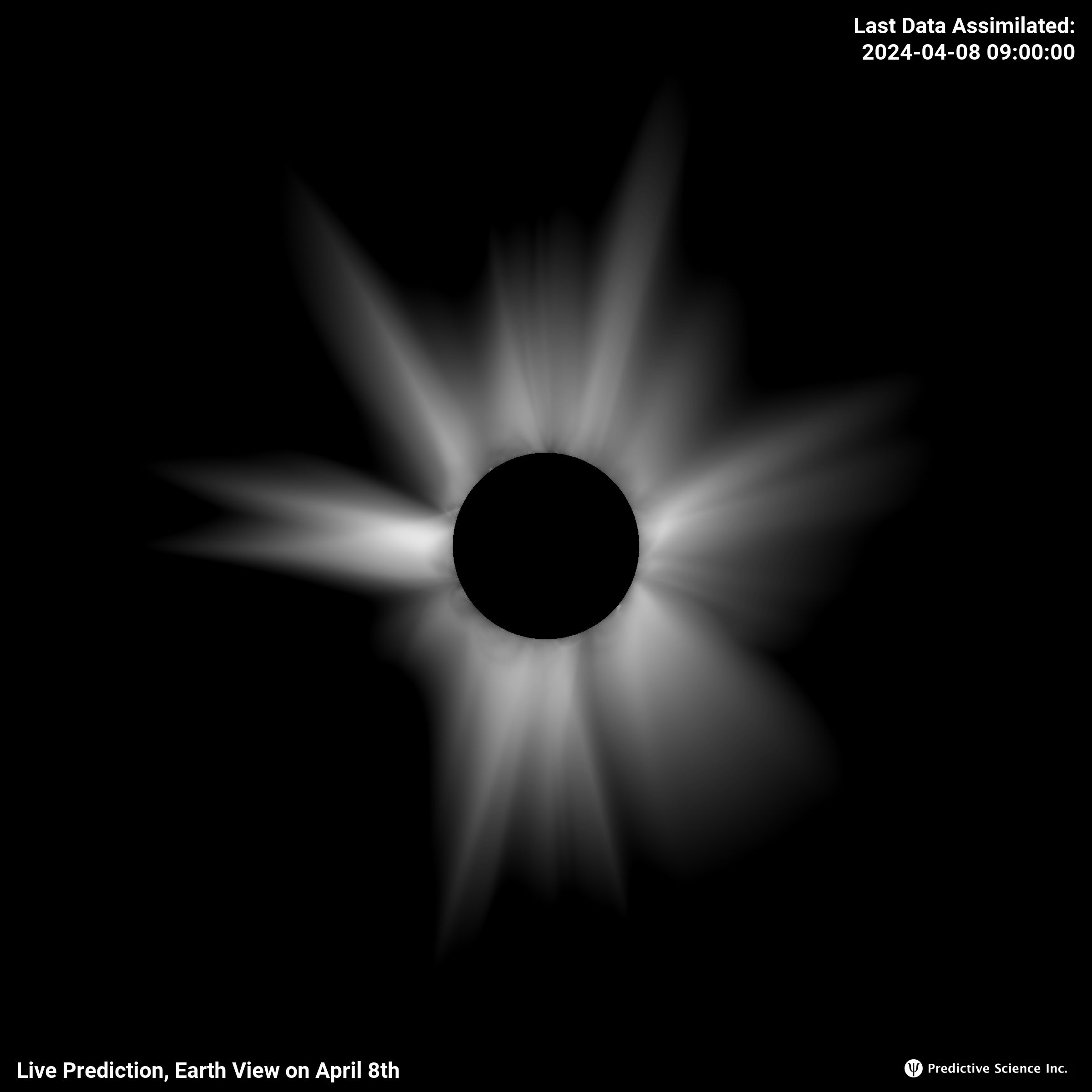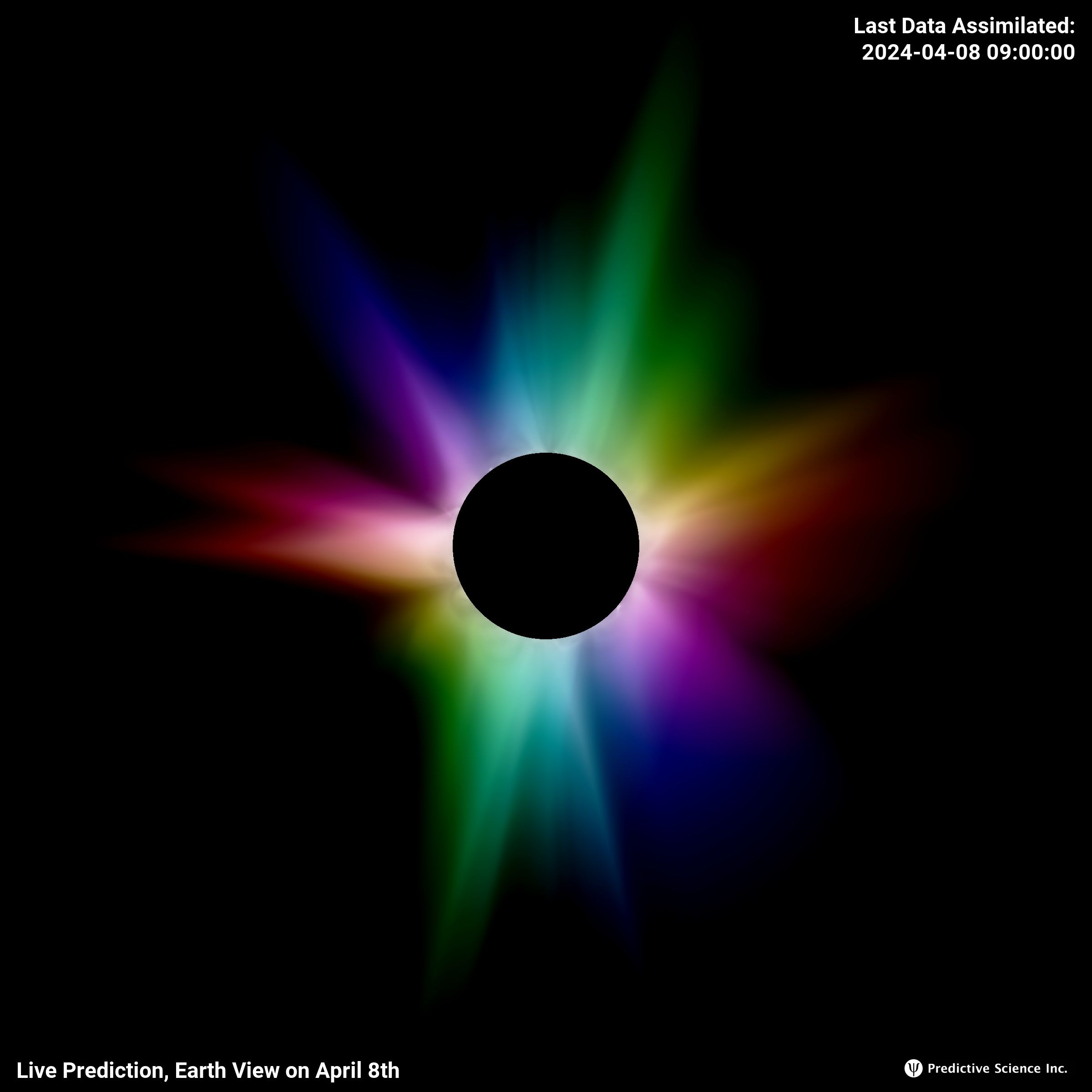Total Brightness
(K-Corona)
Polarized Brightness
(pB)
Chromatic Polarization
(MZP, RGB Composite)
Total Brightness
(K-Corona)
Polarized Brightness
(pB)
Chromatic Polarization
(MZP, RGB Composite)
During a total solar eclipse, the blinding light of the photosphere is occulted by the moon, allowing
us to see the highly complex corona stretching out into space. The white light that reaches our eyes was primarily scattered off electrons in the corona (the K-corona), revealing the imprints of magnetic structure. We use the plasma density from the MAS simulations to produce synthetic white light imagery.
The leftmost image/animation is a prediction of the total brightness, radially detrended in a rough attempt approximate what the human eye might see during the solar eclipse. This detrending is used in the following images as well.
The center image/animation shows the predicted polarized brightness (pB) of the corona. Traditionally, pB has been used to separate light scattered by the K-corona and the F-corona (scattering from dust), making it the more scientifically useful quantity.
The rightmost image/animation shows the predicted chromatic MZP polarizations. This is an exciting way to visualize the solar corona, which the Citizen CATE 2024 project is planning to produce from their observations. Observations from a common four-polarizer orthogonal basis (0°, 45°, 90°, and 135°) are converted to a new basis with angles of -60°, 0°, and +60°, referred to as MZP. We derive the MZP images from brightness (B) and polarized brightness (pB). The final images, assembled by mapping each MZP component to one of the RGB colour channels, offer a vivid representation of the Sun’s magnetic coronal structure.
The leftmost image/animation is a prediction of the total brightness, radially detrended in a rough attempt approximate what the human eye might see during the solar eclipse. This detrending is used in the following images as well.
The center image/animation shows the predicted polarized brightness (pB) of the corona. Traditionally, pB has been used to separate light scattered by the K-corona and the F-corona (scattering from dust), making it the more scientifically useful quantity.
The rightmost image/animation shows the predicted chromatic MZP polarizations. This is an exciting way to visualize the solar corona, which the Citizen CATE 2024 project is planning to produce from their observations. Observations from a common four-polarizer orthogonal basis (0°, 45°, 90°, and 135°) are converted to a new basis with angles of -60°, 0°, and +60°, referred to as MZP. We derive the MZP images from brightness (B) and polarized brightness (pB). The final images, assembled by mapping each MZP component to one of the RGB colour channels, offer a vivid representation of the Sun’s magnetic coronal structure.


